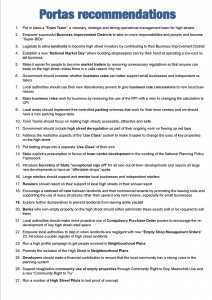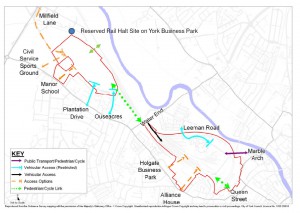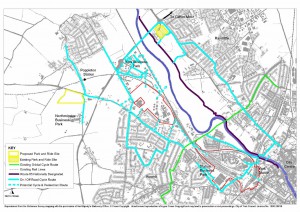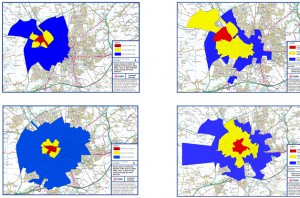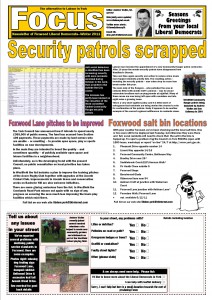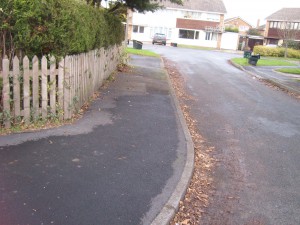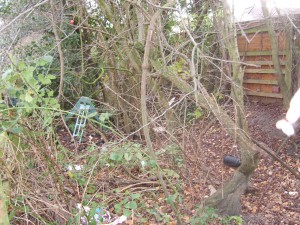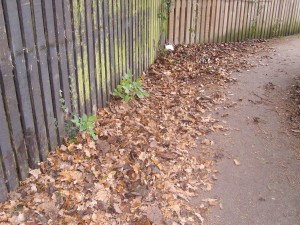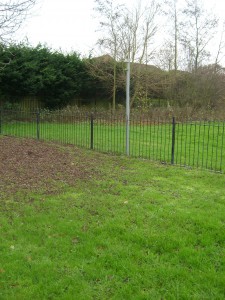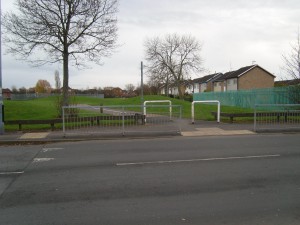Most of the national publicity will go to the Portas report on Britain’s City centres. The accompanying BIS report, however, also contains some interesting information (Department for Business, Innovation and Skills Understanding High Street Performance December 2011 http://www.bis.gov.uk/policies/business-sectors/retail/high-street-review)
It singularly fails to mention the success that York has had over recent years instead quoting Harrogate as a paradigm. In fact the only mention for our area comes in paragraph which manages to misspell the name of a relatively minor peripheral shopping street.
“Promotion, marketing and branding are strong elements of this process of distinguishing the high street from the shopping centre experience. An increasing number of high streets are creating their own online brands, demonstrating that the whole is more than the sum of the parts. Examples include the Crouch End Project in north London, High Street Malvern, and Bishopsthorpe Road (sic) in York”.
There is not much comfort for those who think that renewing the public realm (paving, street furniture etc) will automatically boost the retail sector.
The report says “A recent synthesis of the literature on public realm investment demonstrated the considerable difficulty in evidencing a causal and clearly attributable link between public realms improvements and town centre performance. The research suggests though that work of this nature does offer the opportunity for high streets/town centres to improve their offer, although it clearly relies on a range of other factors including the quality of the retail offer in order to have the fullest impact”.
On car parking, again the researcher cite a lack of evidence when discussing car parking, “A range of approaches to parking have been adopted by local authorities and others, but on the principal issue of car parking charges there is a distinct lack of evidence, now recognised and being addressed by some key organisations”
Similarly there is little evidence about the scale of impact that out of town centres have on the City centre.
There is some good news for retailers though. “While the level of town centre retail spending is forecast to be close to flat over the next few years, total retail sales are forecast to grow by 12%”.
In a separate report Portas lists 27 recommendations for change.
With the York City centre acknowledged to have a relatively successful retail sector, not surprisingly several of the recommendations were adopted in York some years ago. Others would have significant financial implications for the local authority (or central government).
In effect, taxpayers would be expected to subsidise the retail sector through reduced charges of one sort or another.
There was little enthusiasm for the creation of a Business Improvement District in the City a few years ago while the compulsory purchase of empty properties is unnecessary in an area which has relatively low vacancy levels (although sub urban High Streets might benefit from this approach).
In York there are quarterly meetings between senior officials , Councillors and Traders, while City Centre management has been a particular success story in York with event organisation and management at a much higher level than in most other City’s.
Landlords are subjected to particular criticism and in York – like elsewhere – property owners may need to improve their performance in the future.
Portas is critical of betting shop growth. She seeks a separate classification for that activity. Others may feel that the number of charity – and “pound-shops” – in some areas should also be controlled.
But some of the recommendations could be worth pursuing. The “park free after 3” parking initiative, mentioned as an example in the report, could be trialled and a more flexible approach to the provision of market stalls may be a possibility in places like Acomb Front Street.

